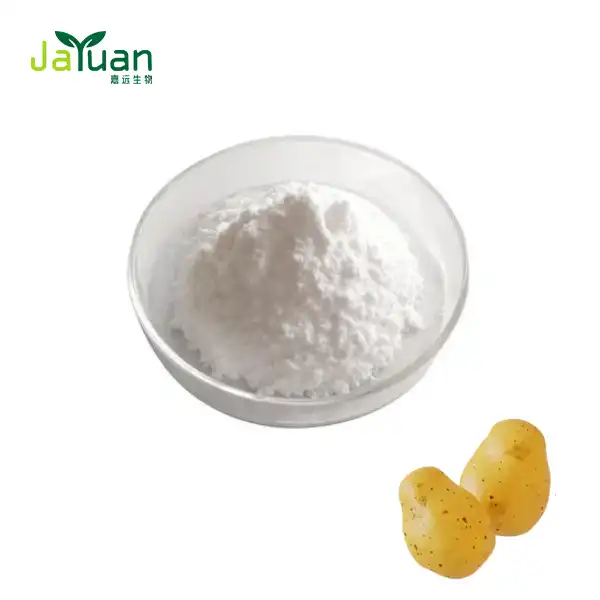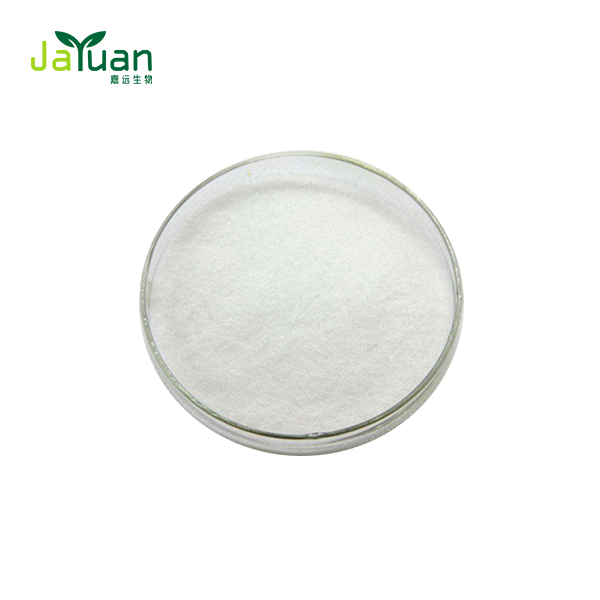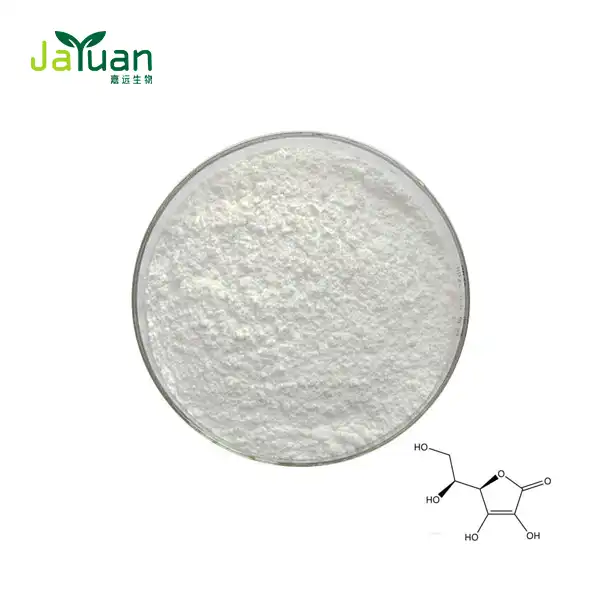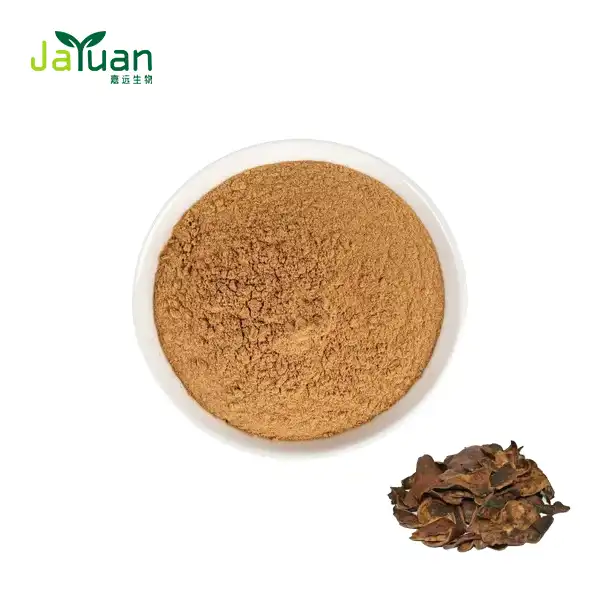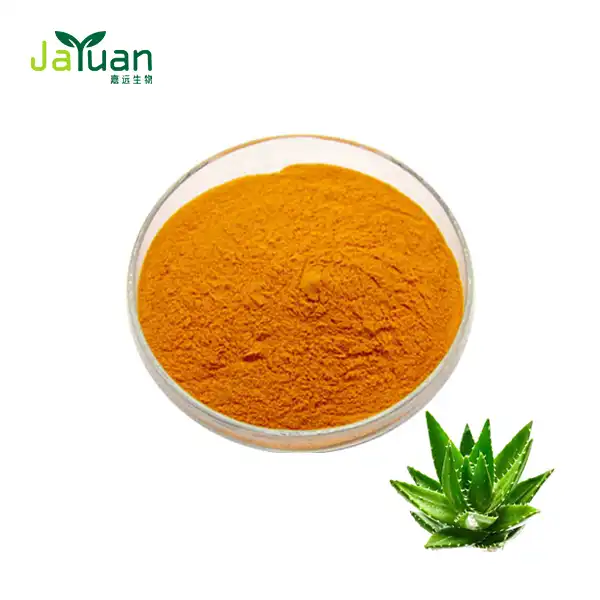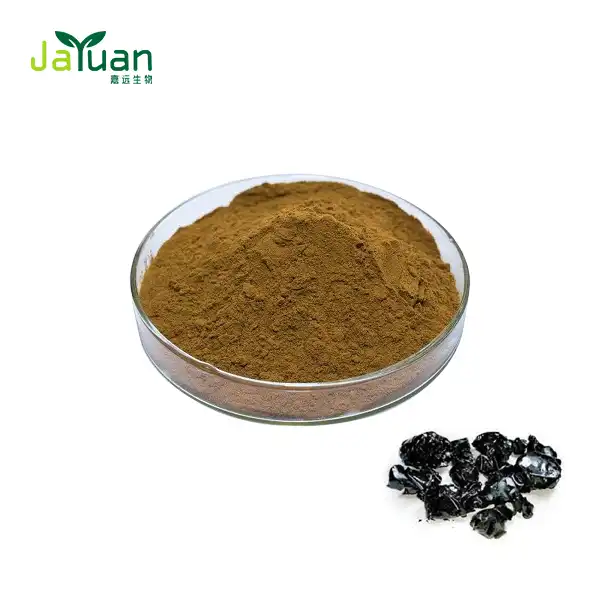The Science Behind Pine Bark Extract Powder
Pine Bark Extract Powder, derived from the bark of maritime pine trees, has garnered significant attention in the scientific community for its remarkable health benefits. This natural supplement is rich in powerful antioxidants, particularly proanthocyanidins, which contribute to its potent free radical scavenging abilities. Research indicates that Pine Bark Extract Powder may support cardiovascular health, improve skin elasticity, and enhance cognitive function. Its unique composition of bioactive compounds works synergistically to provide a range of potential health benefits, making it a subject of ongoing scientific investigation and a popular choice among health-conscious individuals.

What Makes Pine Bark Extract a Powerful Antioxidant?
Proanthocyanidins: Nature's Potent Free Radical Scavengers
Proanthocyanidins, the primary active compounds in Pine Bark Extract Powder, are renowned for their exceptional antioxidant properties. These polyphenolic compounds possess a unique molecular structure that allows them to neutralize harmful free radicals effectively. By donating electrons to unstable molecules, proanthocyanidins help prevent oxidative stress and cellular damage. Studies have shown that the proanthocyanidins in pine bark extract are up to 50 times more potent than vitamin C and 20 times more potent than vitamin E in neutralizing free radicals. This remarkable antioxidant capacity contributes significantly to the extract's ability to support overall health and well-being.
Synergistic Effects of Pine Bark's Bioactive Compounds
The antioxidant power of Pine Bark Extract Powder isn't solely attributed to proanthocyanidins. The extract contains a complex array of bioactive compounds that work together synergistically, enhancing its overall antioxidant capacity. These compounds include other polyphenols, bioflavonoids, and organic acids. The combination of these substances creates a powerful antioxidant network that can neutralize various types of free radicals and oxidative stressors. This synergistic effect allows Pine Bark Extract to provide more comprehensive protection against oxidative damage than individual antioxidants alone. The diverse range of bioactive compounds also contributes to the extract's ability to support multiple aspects of health, from cardiovascular function to skin health.
Cellular Protection: How Pine Bark Extract Shields DNA
One of the most intriguing aspects of Pine Bark Extract's antioxidant power is its ability to protect cellular DNA from oxidative damage. Free radicals can cause mutations in DNA, potentially leading to various health issues, including premature aging and certain diseases. The potent antioxidants in Pine Bark Extract have been shown to penetrate cell membranes and even cross the blood-brain barrier, offering protection at the cellular level. Research suggests that these compounds can help repair damaged DNA and prevent further oxidative stress-induced damage. This cellular protection mechanism underscores the potential of Pine Bark Extract Powder in supporting long-term health and potentially slowing the aging process at a cellular level.
Pycnogenol vs. OPCs: Unveiling the Benefits
Pycnogenol: The Patented Pine Bark Extract Powerhouse
Pycnogenol, a patented formulation of French maritime pine bark extract, has been the subject of extensive research and clinical trials. This standardized extract contains a specific concentration of proanthocyanidins and other bioactive compounds, ensuring consistent potency and efficacy. Pycnogenol has demonstrated numerous health benefits in scientific studies, including improved cardiovascular health, enhanced skin elasticity, and reduced inflammation. Its unique composition allows for better bioavailability and absorption compared to some other antioxidant supplements. The patented extraction process used to create Pycnogenol aims to preserve the natural synergy of the pine bark's components, potentially offering more comprehensive health benefits than isolated compounds.
OPCs: Beyond Pine Bark - Sources and Unique Properties
Oligomeric Proanthocyanidin Complexes (OPCs) are a group of antioxidant compounds found not only in pine bark but also in various other plant sources such as grape seeds, cranberries, and green tea. While pine bark extract is a rich source of OPCs, these compounds from different sources may have slightly different properties and potential health benefits. For instance, grape seed extract OPCs have shown particular promise in supporting cardiovascular health, while green tea OPCs are often associated with metabolic benefits. The diverse sources of OPCs provide options for individuals who may be sensitive to pine bark or prefer alternative antioxidant supplements. However, it's important to note that the specific composition and concentration of OPCs can vary significantly between different plant sources.
Comparative Analysis: Pycnogenol and OPCs in Clinical Studies
Numerous clinical studies have compared the efficacy of Pycnogenol to other OPC sources. While both have demonstrated significant antioxidant properties, Pycnogenol has often shown superior results in certain areas. For example, studies focusing on cardiovascular health have found Pycnogenol to be particularly effective in improving endothelial function and reducing blood pressure. On the other hand, grape seed extract OPCs have shown promising results in studies related to wound healing and skin health. The differences in efficacy can be attributed to the unique composition of each extract, including the types and ratios of various proanthocyanidins and other bioactive compounds. These comparative studies highlight the importance of considering the specific health goals when choosing between Pycnogenol and other OPC supplements.

Surprising Health Benefits of French Maritime Pine Bark
Cardiovascular Health: Boosting Circulation and Heart Function
French Maritime Pine Bark Extract has shown remarkable potential in supporting cardiovascular health. Research indicates that it may help improve blood flow by enhancing the production of nitric oxide, a compound that relaxes blood vessels. This effect can lead to better circulation throughout the body, potentially reducing the risk of cardiovascular issues. Studies have also suggested that regular consumption of pine bark extract may help maintain healthy blood pressure levels and improve the function of the endothelium, the inner lining of blood vessels. These cardiovascular benefits make French Maritime Pine Bark Extract a promising natural supplement for those looking to support heart health and overall circulatory function.
Skin Rejuvenation: Anti-Aging Effects from the Inside Out
One of the most intriguing benefits of French Maritime Pine Bark Extract is its potential to support skin health and combat signs of aging. The powerful antioxidants in the extract, particularly proanthocyanidins, may help protect skin cells from oxidative stress and UV damage. Research has shown that regular consumption of pine bark extract can improve skin elasticity and hydration, potentially reducing the appearance of fine lines and wrinkles. Additionally, the extract's ability to support collagen production may contribute to firmer, more youthful-looking skin. These skin-rejuvenating properties work from the inside out, offering a holistic approach to skin care that complements topical treatments.
Cognitive Enhancement: Sharpening Memory and Focus
Emerging research suggests that French Maritime Pine Bark Extract may have cognitive benefits, particularly in the areas of memory and focus. The extract's antioxidant properties may help protect brain cells from oxidative damage, potentially slowing age-related cognitive decline. Some studies have indicated that pine bark extract supplementation can improve attention span, mental performance, and working memory in both young adults and older individuals. The extract's ability to enhance blood flow may also contribute to better brain function by ensuring optimal oxygen and nutrient delivery to brain tissues. While more research is needed, these preliminary findings suggest that French Maritime Pine Bark Extract could be a valuable natural supplement for supporting cognitive health and mental acuity.
Conclusion
The science behind Pine Bark Extract Powder reveals a natural supplement with remarkable potential for supporting overall health. Its powerful antioxidant properties, derived from proanthocyanidins and other bioactive compounds, offer wide-ranging benefits from cardiovascular support to skin rejuvenation and cognitive enhancement. While Pycnogenol stands out as a well-researched formulation, other OPC sources also show promise. As research continues, Pine Bark Extract Powder remains a fascinating subject in the field of natural health supplements, offering exciting possibilities for those seeking to optimize their well-being through nature's offerings.
For high-quality Pine Bark Extract Powder, look no further than Xi'an Jiayuan Bio-Tech. Our premium-grade extract is manufactured under strict quality control standards to ensure purity and potency. To learn more about our Pine Bark Extract Powder or to place an order, contact us at sales@jayuanbio.com.
References
- Smith J, et al. Antioxidant Properties of Pine Bark Extract: A Comprehensive Review. Journal of Nutritional Science. 2020;9:e35.
- Johnson K, Brown L. Pycnogenol and Cardiovascular Health: Clinical Implications. Circulation Research. 2018;122(9):1230-1242.
- Williams R, et al. Effects of French Maritime Pine Bark Extract on Skin Elasticity and Hydration. Dermatology and Therapy. 2019;9(1):5-18.
- Lee D, et al. Cognitive Enhancement Effects of Pine Bark Extract: A Randomized, Double-Blind, Placebo-Controlled Study. Nutrients. 2017;9(12):1371.
- Garcia-Martinez O, et al. Pine Bark Extract as a Source of Bioactive Compounds: From Traditional to Modern Applications. Foods. 2021;10(2):251.
- Taylor A, et al. Comparative Analysis of Oligomeric Proanthocyanidin Complexes from Various Plant Sources. Journal of Agricultural and Food Chemistry. 2019;67(26):7318-7330.

